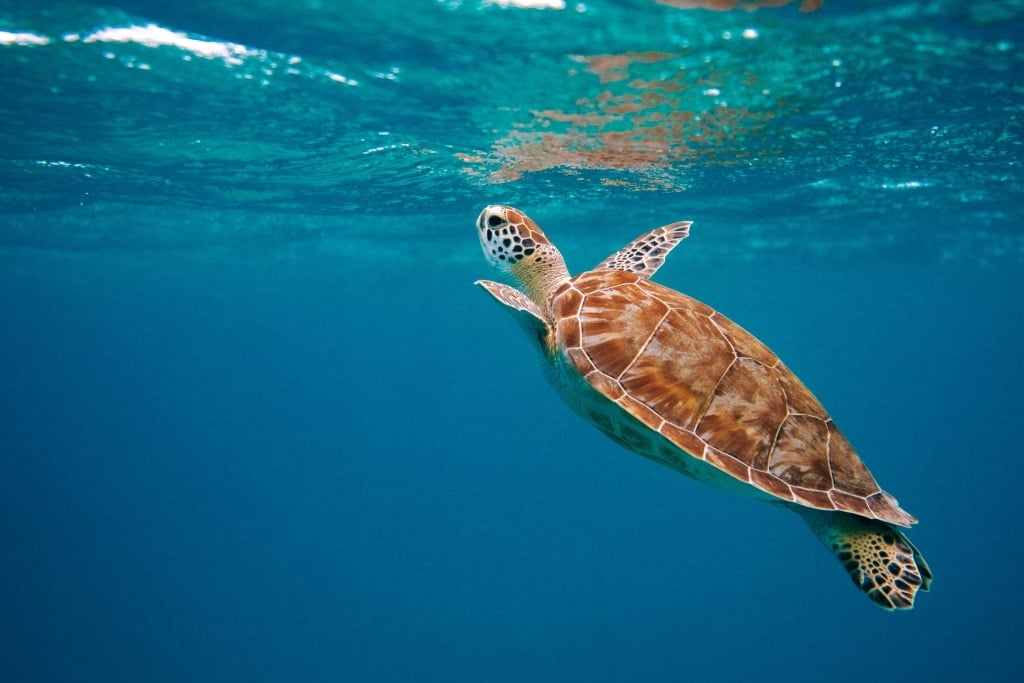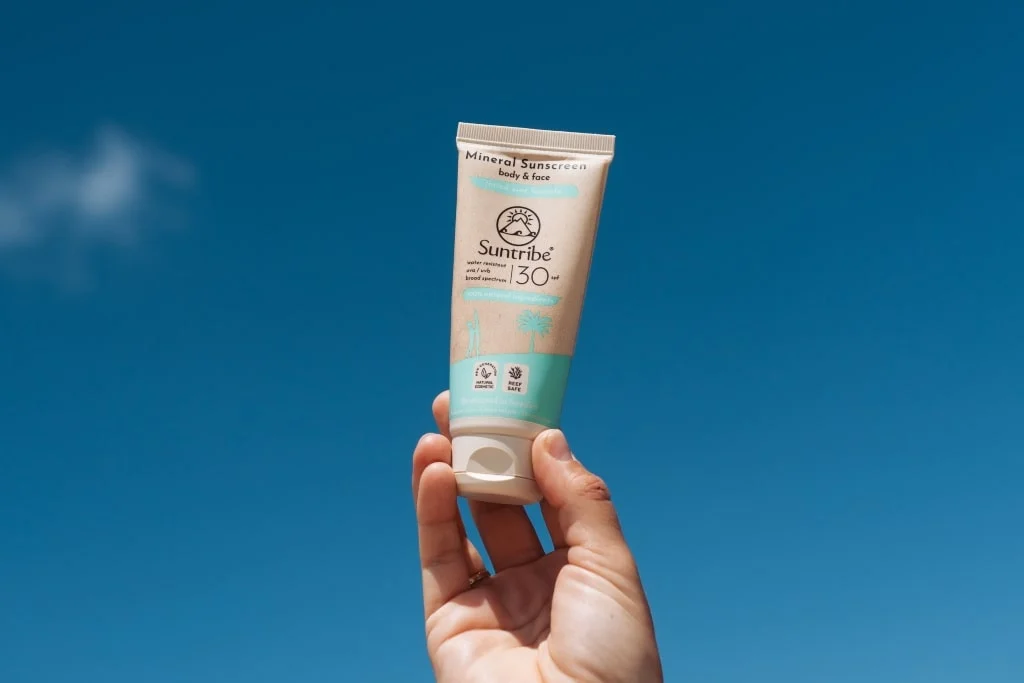Blog
What are PFAS and how to avoid them

By Hanna Oltmanns - June 4, 2024
Sunscreen is essential for sun protection, but did you know that the type of sunscreen you use could impact your health and persist in the environment for many years?
Per- and polyfluoroalkyl substances (PFAS), also known as “forever chemicals,” have been making headlines due to their potential harm to human health and the planet. These man-made chemicals have been in use since the 1940s and are made of carbon and fluorine molecules bonded together. This strong bond makes them resistant to breakdown, allowing PFAS to be found in a wide range of products, including non-stick cookware, water-repellent clothing, and some cosmetics
PFAS have been linked to serious health effects, including cancer, high cholesterol, and birth defects. Unfortunately, these chemicals are found in a wide range of consumer products, including some sunscreens. According to a study conducted by the Nordic Council of Ministers 12,000 people die every year due to PFAS in the European Union alone.
The good news are: in January 2023, Germany, Sweden, Denmark, Norway and the Netherlands submitted a landmark proposal to restrict the use of 10,000 PFAS chemicals under the REACH regulation. The European Chemicals Agency (ECHA) is currently investigating the request.

Why should you avoid exposure to PFAS?
“PFAS have been linked to serious health effects, including cancer, high cholesterol, and birth defects.”
PFAS are almost indestructible, which means they persist in the environment and pose an ongoing problem. They have been used in various products worldwide and are believed to cause various health problems such as impaired fertility, liver damage, cancer, developmental issues, and immune system disruption.
Scientists are concerned that PFAS can build up in peoples’s bodies that are exposed to these chemicals over long periods of time. Since they don’t degrade easily, PFAS can accumulate in the food chain. The main way people are exposed to PFAS is through eating and drinking contaminated food and water.
One of the most concerning aspects of PFAS however is their persistence. They take more than a thousand years to break down and are not easy to get rid of. As a result, they can, potentially cause harmful long-term and dramatic health effects as already mentioned above in both humans and animals. This persistence also means that PFAS chemicals pose an issue that requires our immediate attention.

How to limit your exposure to pfas
There are several simple steps you can take to protect yourself and the environment from PFAS exposure:
1. Choose alternative products
Opt for stainless steel or cast iron cookware instead of non-stick cookware, and avoid products with water- or stain-resistant coatings.
2. Select PFAS-free Sunscreens
Choose sunscreens free of PFAS. Avoid compounds like “PAP” (polyfluoroalkyl phosphate esters) or “PTFE” (polytetrafluoroethylene). Selecting PFAS-free sunscreen benefits your health, the environment, and marine life. When you swim, your sunscreen can wash off and enter the water, potentially harming fish, coral, and other aquatic life. Studies show that PFAS can accumulate in fish and other animals, leading to harmful effects on their health and ecosystems.
3. Use certified PFAS-free products
Look for products certified as PFAS-free by third-party organizations like the Green Science Policy Institute or the Environmental Working Group. These organizations conduct independent testing to ensure products do not contain PFAS or other harmful chemicals.
4. Filter your drinking water
PFAS can enter drinking water through sewage, industrial discharge, firefighting foam, and other sources. If you’re concerned about PFAS in your water, have it tested by a professional laboratory. Use a certified filter designed to remove PFAS.
By taking these simple steps, you can reduce your exposure to PFAS and protect your health and the environment. Remember, small changes can have a big impact. Choose wisely when it comes to the products you use, the cosmetics you put on, and the food you eat. By making conscious choices, we can all contribute to a healthier, more sustainable future.
“PFAS are almost indestructible which means they persist in the environment and pose an ongoing problem.”

Suntribe's commitment to PFAS-free sunscreens
All Suntribe sunscreens are free from harmful chemicals, including PFAS. Our natural sunscreens are formulated with only clean ingredients, using non-nano mineral UV-filters for broad-spectrum protection against UVA and UVB rays. We use organic waxes for natural water resistance and package our sunscreens sustainably, allowing you to protect your skin and the environment simultaneously.
Another way to limit your exposure to PFAS is to choose products that are certified as PFAS-free by third-party organizations, such as the Green Science Policy Institute or the Environmental Working Group. These organizations conduct independent testing on consumer products to ensure that they do not contain PFAS or other harmful chemicals.

Want to continue reading?
about the author
Hej, I’m Hanna. I love the outdoors and I am the first one to enjoy every beam of sunshine possible. Through traveling several countries over the past few years, I have become more and more aware of the great need for sustainability in every aspect of our daily life. Through working with Suntribe I am joining the movement of sustainable production of organic cosmetic and help to raise awareness about the issue of harmful chemicals in personal care products for humans and nature alike.




